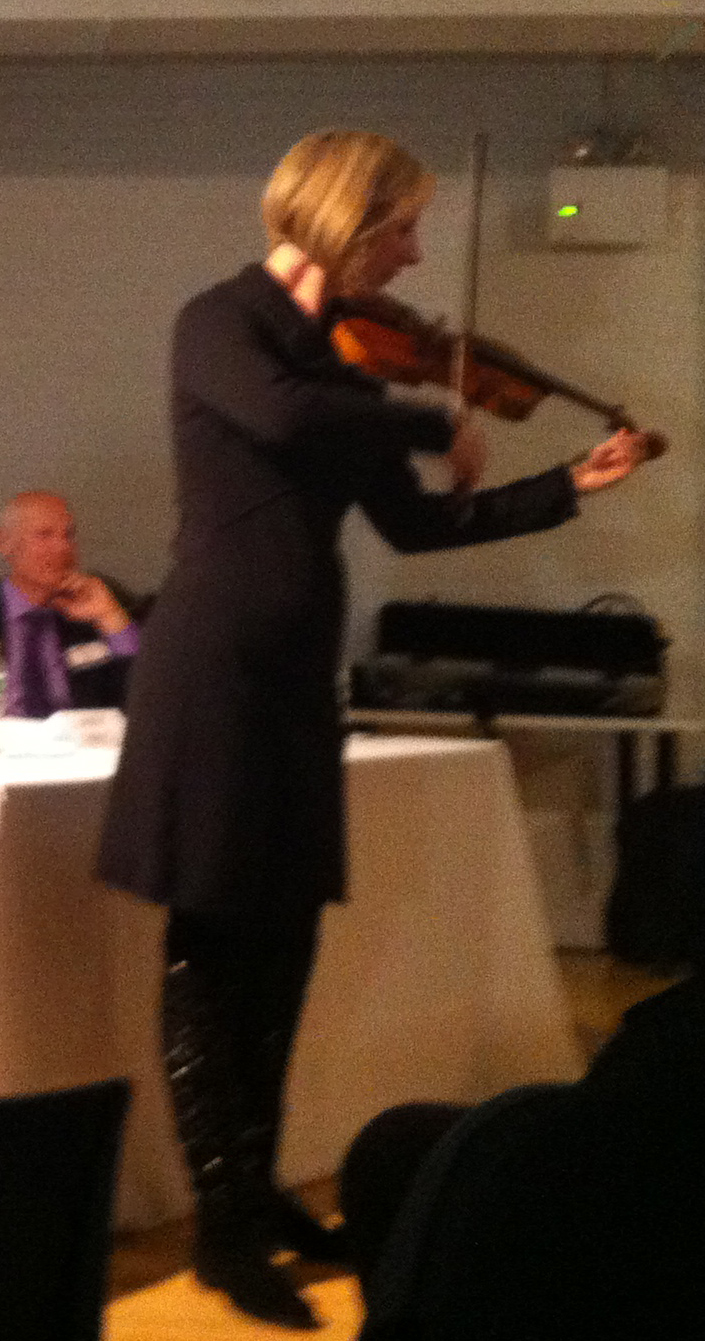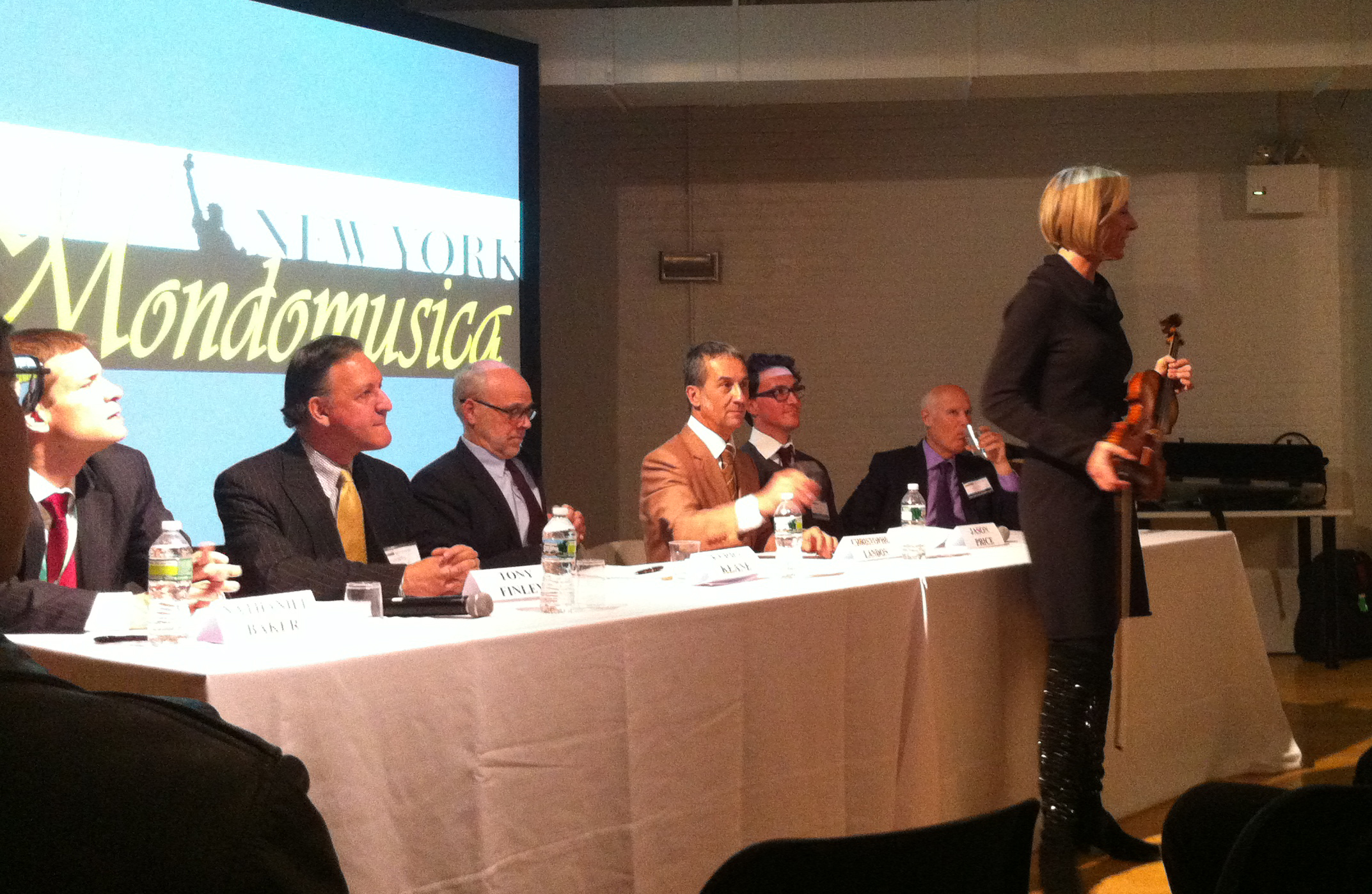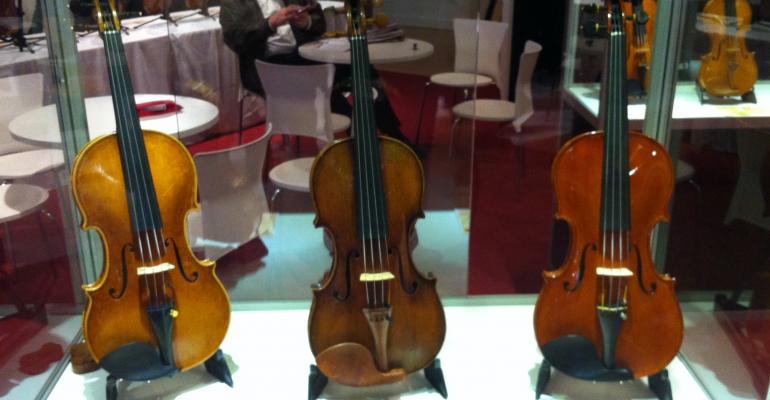A Brahms concerto being played on a Stradivarius violin can be a priceless experience, but is the wooden box with the strings stretched over it in and of itself a good investment?
Historically, valuable antique instruments have been an opaque, illiquid and risky market, according to panelists at the Mondomusica violin show held last week in New York. But if done right, clients can get a high return on their investment.
Elizabeth Pitcairn (pictured here), for example, purchased a Stadivarius violin at Christie’s in 1990 for $1.7 million, she said during Mondomusica. Today, the violin, which inspired the film “The Red Violin,” is worth $10 million.
Lock-ups
That’s over a 23-year period, of course, and investors who can lock up their money for that length of time can profit; for shorter-term investors the returns just aren’t there, said Seth Novatt, managing director at Alliance Bernstein. Novatt said the typical holding period for musical instruments is about 10 years, and investors can expect returns of about 3 to 4 percent after inflation.
“You can’t be in a rush,” said Christophe Landon, founder of Christophe Landon Rare Violins.
Investors also have to factor in the time and money involved in selling through a dealer. The costs are high because you’re supporting a market infrastructure, said Kerry Keane, global specialist and head of musical instruments at Christie’s; consider shipping costs (few would trust a $10 million instrument to commercial transportation carriers), insurance, appraisals and vertification all can add to the transaction costs.
Increasing Demand
That said, demand for these investments has increased in the last few years, especially in new markets like Asia and Russia, Novatt said. The financial meltdown of 2008 meant high-net-worth investors looked to diversify their holdings and took a greater interest in collectibles.
Collectibles typically have a low correlation to stocks and bonds, a long-term track record for increasing in value, and can be a stable investment, Novatt said. They can be restored to near original condition. In addition there’s greater access to information online about these investments and the auction houses that sell them, bringing greater transparency to the market.
There are other risks, of course. For one, they can be stolen because they’re easily transportable, said Anthony Finley, partner at the hedge fund Artisan Rare Instrument Fund. Investors should also watch out for fakes and lower-value instruments, Finley said.
“If all those top instruments are already spoken for, there is a whole slew of other instruments that are out there that you need to be aware of--their relative values,” he said. “But you can waste a lot of money.”
By investing in a fund of instruments, clients can spread the risk across multiple instruments, Finley said.
The Value of the Instrument
How can you tell if an instrument is worth it? Keane said there are six determinants of value: attribution, or who made it; quality; audition; provenance, or who owned it in the past; freshness in the market; and fashion, a huge driver.
At the same time, instruments can be difficult to value; it’s hard to track their performance over time, and while it is getting better there still isn’t a lot of research on this market. But that also means there is room for the market to evolve, and that can create opportunities.
“As long as the value of the top violins continue to expand, which we think they will do for quite some time, I think there are going to be growing gaps and areas of opportunity between various makers, various schools that I think are going to be filled in over time,” Novatt said. “And those are going to represent real opportunities for investment.”






